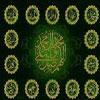Some Traits of Ashura Literature

- Publication date: 2015-11-01 20:41:12
- Number of views: 432
Ashura literature deals with oral and/or written discourses on, or related to, the Battle of Ashura of 10 Muharram 61 AH/ 10 October 680 AD. Ashura literature encompasses a wide array of materials, ranging from (chiefly Muharram and Safar) preachings, dirges (nawhas), and elegies (marthiyas) to ziarat-texts, salawats, books, treatises monographs, theses, dissertations, martyrdom accounts (maqtals), and biographies.
Ashura literature is both obtainable and produceable in virtually any language. As such, Ashura literature is obtainable in many languages and dialects. It is not a type of literature special to a certain language, e.g., Arabic, Persian, or Urdu. The minute an Ashura work is produced in any language (even for the first time in that given language), it can be referred to as a instance or piece of Ashura literature in that language.
Ashura literature is an era-free type of literature. Some literatures (together with their genres) are typical of, or special to, a certain period or era in the literary (including the social or political) history of a nation or language. Examples of these types of literature are French Renaissance literature and Jacobean literature in English literature. In contrast, Ashura literature can virtually be produced at any time. In this way, it cannot be limited to any specific age or era.
Ashura literature is not restricted to any specific language Granted that the earliest forms of Ashura literature were produced in Arabic; it has transgressed the boundaries of the Arabic language. Moreover, it has long been available in other Islamic languages, e.g Persian, Urdu, and Turkish. Specimens of Ashura literature are also available in English, whether in original or in translation.
Ashura literature is a regional or local literature. Although the Battle of Ashura took place in the sweltering desert of Karbala, Iraq its lessons and effects have made it a never-ending literature, with its universal overtones steadily escalating. Contrary to such literatures as those of Bengali, Latin America, or West-Africa, Ashura literature has a universal scope: it can be produced everywhere and at every time.
Ashura literature is, first and foremost, a mark of the sense of the devotion and veneration expressed by its makers, translators, or contributors toward all the Ashura martyrs, particularly Imam Hussein (A.S), the "Prince of Martyrs". Emerging out of veneration and devotion, it differs greatly in influence from all panegyrizes and eulogies produced out of an expectation for a reward or special attention from the fellow adored. Contributors to Ashura literature take delight in having had the opportunity to discharge their religious service and veneration.
